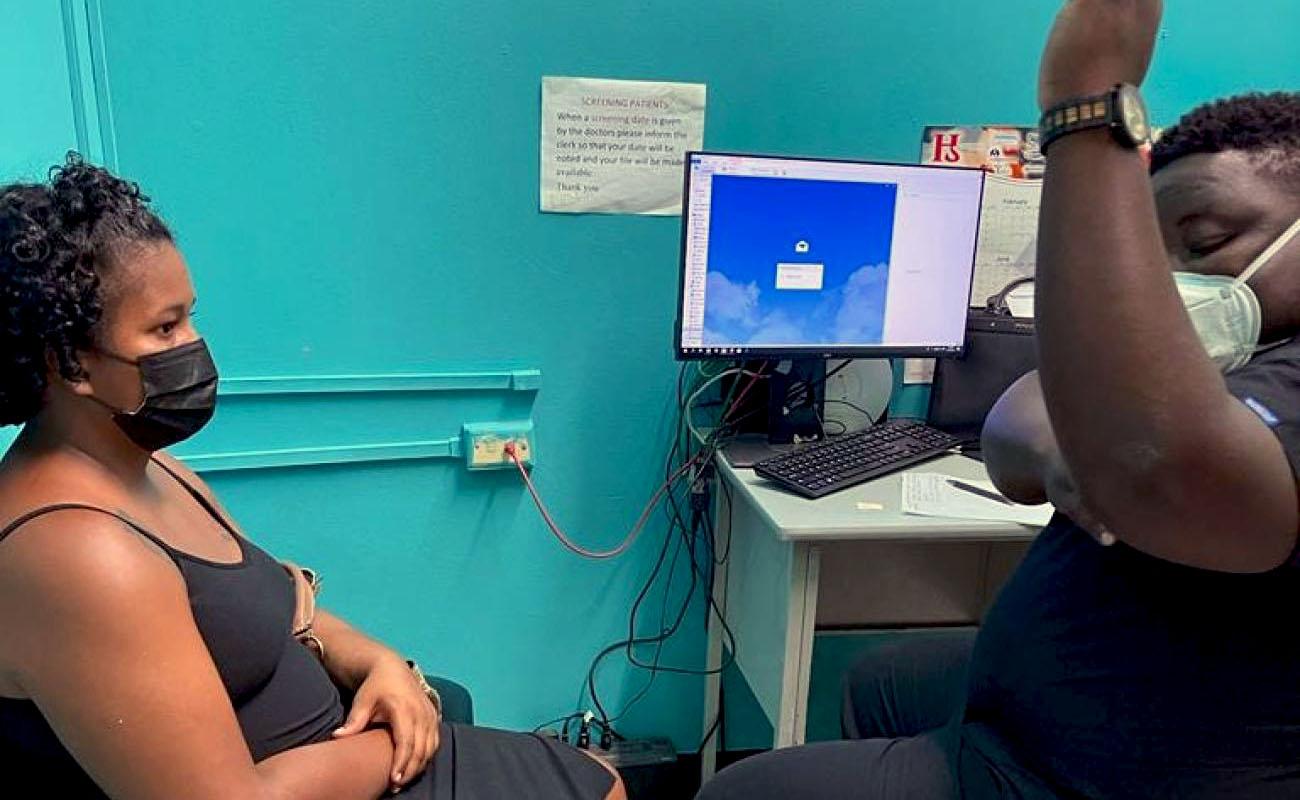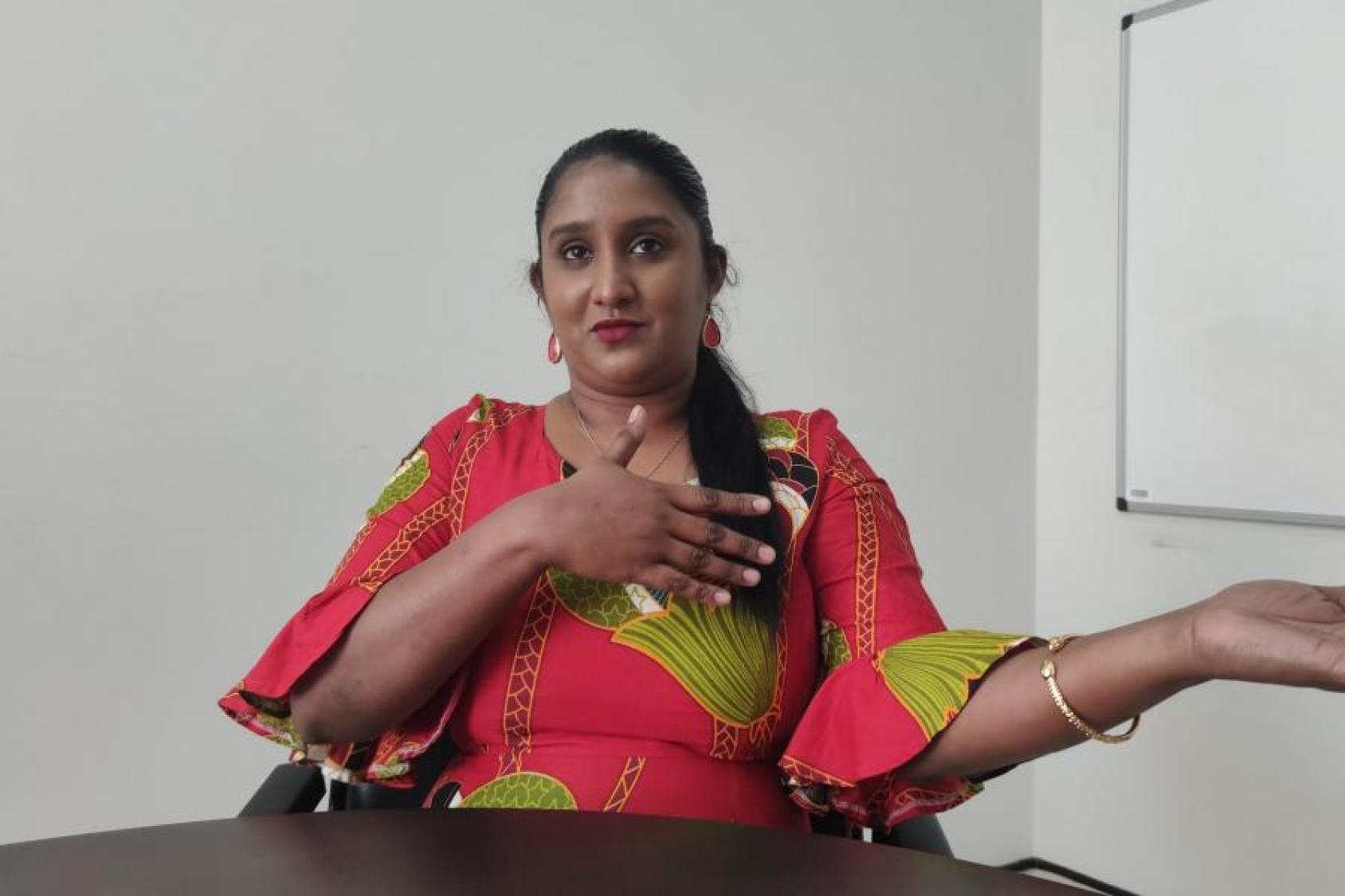Women in Trinidad and Tobago take ownership of their reproductive lives

After the birth of her son, Dalini Bhim decided to wait before having a second baby. The 32-year-old mother opted to use contraceptives.
Then in 2020, her public health centre offered her the chance to participate in a pilot project for a new contraceptive that could prevent pregnancy for up to five years. Unlike other contraceptives, this one involved a minor surgical procedure to be inserted sub dermally in the inner side of the upper arm.
“It was quick, it was not painful at all,” recalls Dalini. “It was a very happy thought that I don’t have to take any other contraceptives. And it’s very economical in terms of your pocket, instead of having to buy other types of contraceptives like the pill. Just this one procedure, and that’s it.”
Dalini says she wants to enjoy more time with her five-year-old son before having a second baby. She plans to expand her family after the implant is removed by the end of the next five years.
“We have a choice in making the decision to conceive, so we are better able to plan when we will conceive a child,” Dalini says.

A more convenient solution
By the time she gave birth to her third child, Savitri Singh-Jones decided she didn’t want to have any more children. She turned to oral contraceptives, paying to refill her packet of pills on a monthly basis.
“You have to remember to take this pill every day, and sometimes I used to forget it”, says Savitri, now age 43.
Later on, she tried injectable contraceptives, which required her to visit her doctor monthly for a new dose.
Being tied to the clock while taking the pill or compelled to make monthly visits to health centres for injections, Savitri was in search of a more convenient solution. When a district nurse asked if she was interested in a form of contraception that would prevent pregnancy for five years, Savitri jumped at the opportunity.
“The best thing is, it’s in your arm. We went through a little talk, and I decided to take it.”
In the year since she received her implant, Savitri has seen a secondary benefit of experiencing shorter, lighter periods. She’d always grappled with heavy bleeding that would last for weeks at a time.
“Mentally, it took a toll on me. Most of the time my blood count would be low, so I would have to see a doctor and try to take iron tablets,” she recalls. “Now, my period is very, very light which I really like. It’s a big relief.”
“For me, it’s just peace of mind,” Savitri adds. “I would encourage every woman to take this.”
Savitri was one of nearly 400 women who were the first in Trinidad and Tobago to receive the contraceptive implant for free, which offers an effective and long-term way to prevent pregnancies and it can be safely removed, followed by a quick return to fertility.
A 2011 Government survey found that 40.3% of women ages 15 to 49 in Trinidad and Tobago, who are married or in a relationship, use at least one method of contraception.
Broadening the options during their reproductive lives

“It’s giving clients another choice,” explains midwife and family planning nurse, Chennel Davis-Gentle, who helped to administer the implant at a health centre in east Trinidad.
“And because it’s minimally invasive and it’s long-acting yet reversible, they will find a lot of options for their reproductive life in this method. They find it interesting, and it’s something new. It’s something new to us.”
The implant works by continuously releasing low doses of a synthetic hormone called levonorgestrel, which prevents pregnancies and suppresses ovulation.
If a woman decides she wants to have a baby, she can opt to have the implant removed earlier and she’ll soon resume having normal periods, meaning her fertility returns almost instantly.
After a woman is successfully screened and pre-existing medical conditions that would contraindicate the insertion of the implant are ruled out, two small rods the size of a matchstick are inserted under the skin on the inside of the upper arm. The process only requires local anaesthesia and takes no more than three minutes.
“One thing that jumped out at me was that it had fewer contraindications”, says Dr. Jamila Belgrave, one of the physicians who helped coordinate the pilot project in Sangre Grande.
“So, we had a small set of patients who were hypertensive who could still get it [the contraceptive implant], because they were limited in the contraceptive options they could use and this didn’t limit them”, she says.
Dr. Belgrave said most of the women who received the implant already had at least one child and were trying to space out or prevent additional pregnancies.
“I hope that the project will continue because a lot of women are asking for it,” she says.
A first for Trinidad and Tobago
Contraceptive implants have been on the market since the 1990s but they were not available in Trinidad and Tobago.
UNFPA and the Ministry of Health’s Directorate of Women’s Health collaborated on a plan to introduce this contraceptive to the local population. PAHO/WHO and UNFPA trained a group of doctors and nurses from across the country.
The implants were offered free of charge during a year-long pilot project, which ran from July 2019 to June 2020 in two of the country’s regional health authorities.
Written by Faine Richards, Development Coordination Officer, UN Trinidad and Tobago. Based on a story originally posted on UN Trinidad and Tobago. Editorial support by Carolina Lorenzo and Paul VanDeCarr from the Development Coordination Office. For more information about the United Nations' work in Trinidad and Tobago, please visit: Trinidadandtobago.UN.org.
To learn more about the results of our work in this area and beyond, please read the latest UNSDG Chair Report on DCO.













